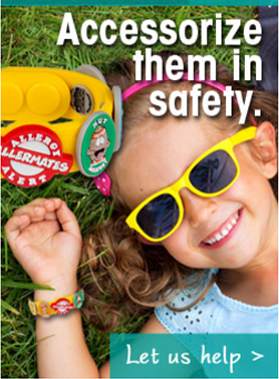
Diabetes in Children: What You Need to Know
A diagnosis of Type 1 Diabetes in children, formerly called Juvenile Diabetes, can be scary and overwhelming. Both you and your child will have to learn about this disease, how to give injections, count carbohydrates and monitor blood sugar. Consistent care will be required, but advances in blood sugar monitoring and insulin delivery have been greatly improved in recent years.
Symptoms and Diagnosis
The symptoms of type 1 diabetes in kids usually develop quickly over a few weeks. Watch for:
If you notice any of the first 5 of these symptoms, talk to your child’s doctor right away.
The primary screening test for type 1 diabetes in children is a random blood sugar test. It may be followed up with a Glycated hemoglobin (A1C) test. Another type of test is the fasting blood sugar test, which is done after an overnight fast. If a positive diagnosis is made, some additional tests will help determine if your child has type 1 or type 2 diabetes.

Treatment
Regular doctor visits will help keep diabetes in children managed and allow tests for early signs of complications. The treatment for type 1 diabetes is adherence to blood sugar monitoring, insulin, healthy eating and regular exercise. The specific treatment plan will change as children grow, but your doctor and other specialists will monitor and let you know when it’s time to make adjustments. You should expect to begin a new regimen of:
- Blood sugar monitoring, often several times a day to ensure your child is in an acceptable range as determined by your doctor.
- Insulin delivery, either by injection with a small needle or an insulin pen or insulin pump for some children
- Dietary support from healthy, nutritious foods that are low in fat and calories. Over time, you will figure out how different foods affect your child’s blood sugar so that you can make adjustments
- Exercise as part of the daily routine
Complications and Dangers
Type 1 diabetes in kids, if untreated, can affect nearly every major organ. But the good news is that keeping blood sugar close to normal dramatically reduces the chance of long-term complications that can be disabling or even fatal. Regular blood sugar monitoring is critical, but sometimes short-term or immediate complications can arise.
- sweating
- shakiness
- hunger
- dizziness
- pale skin
- rapid or irregular heart rate
- fatigue
- difficulty concentrating
- headaches
- irritability
Later signs can be mistaken for drunkenness or intoxication in older teens and adults and include lethargy, confusion, behavior changes that may be dramatic, poor coordination or even convulsions. During the night, a child with diabetes may wake up with excessive sweating or headache, and due to a rebound effect, might even have an unusually high blood sugar reading in the morning.
When the diabetic child has a low blood sugar reading, follow your doctor’s instructions for what to do. Having a glass of juice, glucose tablet, hard candy or a sugary soft drink may help. Retest 15 minutes afterward to see if it is in the normal range and continue until a normal reading occurs.
Left untreated, hypoglycemia will lead to a loss of consciousness, which may require an emergency injection of Glucagon. A Glucagon emergency kit, if provided by your doctor, should be kept available at all times, even at school, during sports and at sleepovers.
- frequent urination
- thirst
- blurry vision
- fatigue
- nausea
- irritability
- difficulty breathing
- difficulty concentrating
- weight loss or failing appetite
- nausea
- vomiting
- abdominal pain
- sweet or fruity smell on the child’s breath
Managing Diabetes
It will seem overwhelming at first, but take things one step at a time and managing diabetes in your kid will become second nature. Success will greatly reduce your child’s risk of serious complications in both the short- and long-term. Much of your management will include education – teaching your child and others involved in his or her care how to monitor and respond to blood sugar fluctuations, administer medications, and make smart food choices.
Dealing with Diabetes
It’s not easy to make the necessary changes and stick with them. Not only can blood sugar fluctuations affect your child’s emotions and behavior, nobody likes to be different. Having to monitor blood sugar and take injections can lead to anxiety or depression, so be prepared to address a newly diagnosed child’s emotional needs as well. Therapy, support groups or even attending activities with other diabetic kids can help them adjust and adhere to the regimen required of them.
reaction starts,
act fast!
- Children should tell an adult
- Use emergency medication if prescribed. Do it exactly the way the doctor has explained and the way you have practiced

ASK OUR MEDICAL EXPERTS
We get questions from parents and caregivers daily regarding kids’ allergies, and we go straight to the source for the answers – the experts, our doctors.




